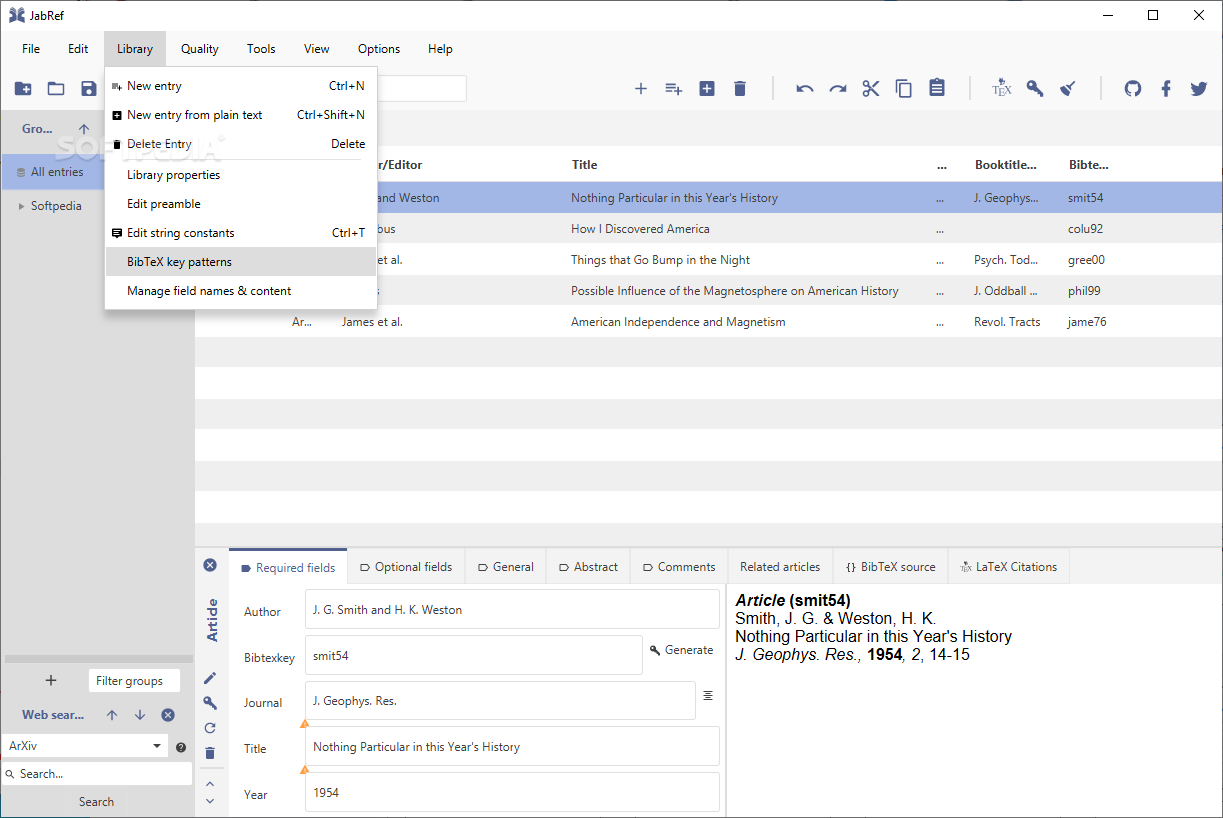Graphical Java application for managing BibTeX and biblatex databases. JabRef is an open-source, cross-platform citation and reference management tool. There is no official package available for openSUSE Leap 15.2. JabRef is an open-source application that helps you easily manage your bibliography references from books, articles, manuals, conferences, doctoral theses, pamphlets, and other resources. The file format that JabRef uses is BibTeX, the standard LaTeX bibliography format.
BibTeX Format Description
BibTeX-files may contain four different types of entries:
Jabref Vs Bibdesk
- @STRING defines abbreviations in the form of
which can later be used in a tag like this - @PREAMBLE defines how special text should be formatted.
- @COMMENT for comments not taken in regard by BibTeX.
- Entries each declaring a single reference to a type of publication, for example:@article, @book, @inproceedings etc.
A BibTeX entry consists of the type (the word after @), a citation-key and a number of tags which define various characteristics of the specific BibTeX entry.
Among those tags can be for example: author, title, year, etc. Some tags are mandatory for certain types of BibTeX entries, some are optional.
There is a set of standard-tags existing, which can be interpreted by BibTeX or third-party tools. Those which are unknown are ignored by BibTeX, thus can be used to store additional information without interfering with the final outcome of a document.

Tags
Jabref Chrome Extension
A BibTeX tag is specified by its name followed by an equals-sign and the content. The tag's name is not case-sensitive. The content needs to be enclosed by either curly braces or quotation-marks. Which form of enclosure is used is depending on the user's taste, and both can be applied together in a single BibTeX entry, but there is one difference between those two methods: When quotation-marks are used, string concatenation using # is possible, but not when braces are used.
For example, the following statements are equal:

It is important to know that abbreviations previously defined using the @string command can only be used in conjunction with other strings using the string concatenation.

Numbers can either be enclosed by braces or quotation-marks, but can stand alone. Tags are separated by commas; if not, the BibTeX parser will produce an error. The last tag can be finished with a comma, although not necessarily.
Jabref Mac
is a correct BibTeX entry.
Jabref Reference Manager
- Alver, Bente (1971), Heksetro og trolldom (Oslo).Google Scholar
- Balvig, Flemming (1982) “Ungdomskriminalitet – med saerlig henblick på retssystemets utvelgelsesmekanismer”, Arsberetning 1981 Kriminalistisk Institute Københavns Universitet, Stencilserie, no. 18, pp. 33–49.Google Scholar
- Bødal, Kåre (1982), 350 narkoselgere. (Universitetsforlaget).Google Scholar
- Christie, Nils (1952), “Fangevoktere i konsentrasjonsleire”, Nor disk Tidsskrift for kriminalvidenskab vol. 41, pp. 439–58.Google Scholar
- Christie, Nils (1952), “Fangevoktere i konsentrasjonsleire”, Nor disk Tidsskrift for kriminalvidenskab vol. 42, pp. 44–60.Google Scholar
- Christie, Nils (1972), As a book (Oslo).Google Scholar
- — (1977), “Conflicts as Property”, British Journal of Criminology, vol. 17, pp. 1–15.CrossRefGoogle Scholar
- — (1981), Limits to Pain (Oslo/Oxford).Google Scholar
- Dahl, Tove Stang (1980), “Kvinner som ofre”, Nordisk tidsskrift for kriminalvidenskab, vol. 70, pp. 56–77.Google Scholar
- Lea, Henry Charles (1888), A History of the Inquisition of the Middle Ages (London).Google Scholar
- Olaussen, Leif Petter (1983), “Om angst for void og alvorlig sjikane.” Lov og Rett, vol. 23, pp. 115–34 (ph).Google Scholar
- Trevor-Roper (1956), Witches and Witchcraft (Great Britain).Google Scholar
